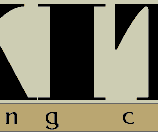 Save this page (87.2 kb)
Save this page (87.2 kb)
AKITAINU, GOROMARU GO
By Susumu Funakoshi
The Representative of the Ichinoseki Line Akitainu:
At present, the popularization of the Akitainu throughout Japan is nearly complete. In the past, the Akitainu possessed only its basic characteristics of stand-up ears and curly tail. Today, almost every locale produces many Akitainu of excellent qualities. Of special excellence are the Akitainu that have won the Meiyosho Awards. I am sure that those who own Akitainu dream of one day being able to raise a champion Akita. An in so doing diligently exercise, train, feed, and care for their dogs. However, the production of a champion is possible only because one is able to draw from an excellent blood line which was developed over a long period of time. There are two major blood lines in the modern day Akitainu. One is the Dewa Line, and the other is the Ichinoseki Line. The most representative of the former Line is Kongo Go which gained fame in Tokyo, and the latter Line is represented by Goromaru Go, who was awarded the Akiho Taneinu Korosho. (1)
As his owner and trainer, I would like to share with you, through this article, the memories of Goromaru from the time of his birth to his death - a period of nine years.
Goromaru's Birth:
Goromaru was born among four puppies out of Sire, Ichinoseki Goma and Dam, Futatsui Goma on January 8, 1948. Ichinoseki Goma was owned by Mr. Ichiro Sato who lived in Tsubaki, Yamamoto-gun, of Akita-ken. He was known as Tsubaki Goma and was 27.5 inches high, a large Akagoma. The original breeder of Ichinoseki Goma was Mr. Kunio Ichinoseki. After the Second World War, when Mr. Ichinoseki found himself without a good Akitainu, Mr. Sato agreed
to allow Mr. Ichinoseki to use Ichinoseki Goma as a stud. Since there was no means of transportation in those days, Mr. Sato decided to walk from Tsubaki to Ichinoseki. However, on the way to Ichinoseki, Mr. Sato visited the Narita's of Futatsui, and learned that Mr. Narita's bitch, Futatsui Goma was in heat. The following morning, therefore, Mr. Sato agreed to allow Ichinoseki Goma to be bred to her. Out of this breeding, one female and three male puppies were born. Goromaru and the female puppy were red and white pinto, and other two were Akagoma, among which was Jiro Go.
Goromaru and Jiro were owned by Mr. Shigetake Narita, who was persuaded by one of my construction foremen to relinquish Goromaru to me. At a later date Jiro Go was sold at a very high price to another party when Mr. Shigetake needed to raise some funds to run for public office.
The Early Days of Goromaru:
The most memorable scene when Goromaru first came to my home was a long haired puppy with large head running from one person to another in the living room of our home. What made him outstanding was his eyes. They were rather small, triangular in shape, deep set and well balanced with the black mask showing the strong character of the dog even at that early age. However, we had difficulties with his diet because of his weak stomach.
Goromaru remained in our backyard for half a year. Although it is unheard of today, it was a prevalent practice to raise the dog without any exercise for the first six months. First of all it was believed a good puppy had to weigh 2 Kanme (2) (along with a head, sturdy bone structure, and a large, powerful tail). In other words, a puppy was fed generous portions of food with the purpose of developing the basis for a large sized dog. Furthermore, puppies of six to ten months were not shown in dog shows and people had no need to develop puppies at this stage for showing. I also think that there was no need for vigorous exercise because Akitas had less problems with their hind legs in those days.
Secondly, because there, was no vaccine, distemper was a distinct threat causing 70% of the deaths. The only way to avoid contacting distemper was to more or less quarantine a dog. Thirdly, a dog that had any potential of developing, into a champion dog was not publicized - a professionalism or feudalism of some kind. In any case, Goromaru survived the first six months.
At six months Goromaru's left ear barely began to stand. However, his height was two Shaku (3) and people used to say "My, what a large dog." as we went through our daily exercise. The exercise at this point consisted of walking about 30 minutes - just enough for Goromaru to relieve himself. As Goromaru became accustomed to being out for his daily exercise, he began showing aggressiveness towards other dogs he encountered on the streets. At eight months, Goromaru's ears were completely erect. They were thick and well formed. However, his cheeks were not fully developed making his ears look a little too large. His chest, after two months of exercise was a little narrow. His grips, on the other hand, were outstanding. His back seemed a trifle weak, but his facial features were excellent. At twelve-thirteen months there was little danger of his ever contracting distemper. He was full of spirit, and his coat which tended to be a little soft, became stiffer, and developed to perfection.
The First Show
On May 3, 1950, I decided to enter Goromaru in the 13th Akiho Headquarter Show. We boarded a freight car and headed for Odate City. Although it was right after the Second World War, the Akitas gathered at the Show were impressive to say the least. One exemplary exhibit representing the Ichinoseki Line was Goromaru's Sire, Ichinoseki Goma; representing the Dewa Line was Kongo Go's Dam, Tatemitsu Go, both recipients of the Minister of Education Awards. They were indeed the center of attraction. Ichinoseki Goma, although getting on in age had not lost any of his many splendid features - the old warrior-like face, its 27.5 inch height, and his well balanced structure. His weakness in the hind legs did not detract from his over-all excellence. At the time he was nursing a skin ailment on his back, and the-red mercurochrome accentuated, the image of Ichinoseki Goma in my memory of him. On the other hand, Tatemitsu Go was a heavy, well built bitch having large Kurogoma features (head, face, neck, chest, legs and tail) and yet showed femininity. She was indeed the representative of the Dewa Line of Akitas.
Coincidentally, Goromaru's litter brothers, Jiromaru Go, was also at the show and placed second-overall after Long Go. Jiromaru was a well balanced Goma colored dog of 25 inches, and was owned by Mr. Igarashi of Odate City. Jiromaru later moved to Seto but did not produce any notable puppies.
Goromaru Go placed third in the Soken Class (4) but did not place at all in the over-all class. Regardless of his placement, Goromaru's popularity was overwhelming. His face, his spirit, bone structure, grip, and excellent gait won the admiration of the audience. However, Goromaru had his faults - his chest was a little narrow and his tail was a little long. His greatest fault, however, was his marking, a goma colored pinto. At the time, pinto did not place high even though his other qualities were excellent. However, because of his showing at the Headquarter Show, many breeders sought his stud services and his popularity increased as time went by.
Goromaru and His Progeny
The reason why Goromaru is considered one of the most important Akitainu in the history of Akitas is because of the excellent quality of his offspring. Among his many advocates as a stud were Mr. Heiemon Kyono, and Mr. Katsusuke Ishihara of Akikyo. It was Mr. Ishihara who convinced Mr. Masutaro Ito of Shimisu-mura, who was the leader of the Ohira Line of Akitas (more commonly known as Iwate Matagi), to breed Goromaru to their line of Akitas. Although it may sound as if such a task was simple, it was a monumental one. Mr. Ito, the mayor of his town was very stubborn. His Ohira Go, Miura's Chinpei Go and other Akitainu such as Yohei, Shiromaru, and Chihko were all in-bred and had never been bred with outsiders. Their colors were all a beautiful red. To breed an Akagoma pinto, it was feared, would produce pinto (not at that time recognized), white, Moku (5), and other undesirable puppies.
The breeding of Goromaru to Chimpei produced Kiyohime; Goromaru to Shiromaru produced Tanihibiki; Goromaru to Yohei produced Fudo Go and Midai Ohira Go; Goromaru to Kinode Go produced Oyashima Go. They were all excellent red Akitas. Kiyohime was later awarded the Akiho Sakushutsu Korosho (6) and produced Meiyosho winner, Muchi, and many other famous Akitas. Kiyohime's offspring Kiyome was bred to Tamakumo which produced Daiunme, constituting one of the main lines of Akitas to date. Tanihibiki Go is also Grand Sire of Meiyosho winner Kumohibiki Go. Tanihibiki bred to Jyurome produced Tanigumo Go, which related to the Daiunme line of Akitas.
As a direct result of these breedings, bitches from Odate City were bred to Goromaru. They include Tatemitsu Go, Hatakeyama Goma Go, Daini Nyogetsu Go, Tamura Goma Go, producing famous Meiyosho winners such as Tatenoryu, Raio, Ashida Goma and many other famous Akitas. The breeding of Goromaru to Daini Nyogetsu was not successful as she aborted, and Tatenryu's litter brother Takeshi Go died of distemper.
The breeding of Goromaru to a Dewa Line bitch from Sendai, Jyoteio (out of Raiden and Tatemitsu) produced Kokuo Go and Oshyo Go; Goromaru to Fuji Go produced Fukuryu Go.
Goromaru also contributed in the development of the Yurihi Line of Akitas, the main line of Akikyo (also known as the Akita Matagi Line). These dogs are slightly smaller in built but they are well balanced and have great spirit. The aforementioned Bankomaru, Goromaru to Shinpyome; Oryu Go and Oretsu Go, Goromaru to Akashihime are the representative Akitas of this line of dogs. Bankomaru was especially outstanding in that he was only 25 inches in height, but looked just as tall and impressive as an Akita 27.5 inches tall. Bankomaru and Oretsu Go are both winners of Akikyo's highest award - the Kinsho Meiyohai. Oretsu Go is red with a white mask, a color which is popular today. There were may other excellent Akitas in this line, but space does not permit the listing of all.
In summary, Goromaru was bred to the Ohira Line Akitas which had a flat chest and double curled tail. He was also bred to the Dewa Line of Akitas and to the Yurihi Line, thus, producing three distinct types of Akitas.
Goromaru and Kongo Go
Goromaru having produced many famous Akitas was invited to many shows throughout Japan. One of the greatest or most satisfying moments for Goromaru came at an Akikyo Show held in Tokyo. Kongo Go was then one of the top Akitas in the country. At the above mentioned Show, both Goromaru and Kongo were invited to the show. Kongo was a silvery Goma colored dog, a sleek city prince. Goromaru was a pinto and a country product. Mr. Ichiro Ogasawara. the present Tohoku Regional Chairman describes the meeting of the two Akitas as follows: "The show was judged by Mr. Ryonosuke Hiraizumi and myself. We were all impressed by the two Akitas simultaneously shown at the center of the rink. Mr. Hashimoto, the handler of Kongo, threw his hat in the air several times. And each time Kongo would stand on his hind legs. On the other hand, Mr. Funakoshi, who was handling Goromaru, would advance Goromaru one step toward Kongo, then another. Both Akitas squared off, each staring each other in the eyes. Then suddenly, Kongo backed off. The match was decided." That is how Mr. Ogasawara describes the meeting of the two Akitas.
Goromaru did not deteriorate with age. At age eight, many people suggested that I show him at the Headquarter's Show. However, I finally decided against showing him.
The Death of Goromaru
Goromaru became ill at the age of nine. Dr. Ishiguro, the attending veterinarian, diagnosed on August 1, 1956 that he suffered from an ailment of the shoulder bone. This condition gradually weakened Goromaru, and on September 19, under the watchful eyes of Dr. Shinichi Ishiguro, Mr. Kiyoshi Komatsu and the family he quietly passed away. Mr. Komatsu, to date, says he could hear Goromaru crying from the pain of the ailment. Dr. Ishiguro also says "It must have been quite painful for a dog like Goromaru to have cried so." A few days after Goromaru's death, all the admirers of Goromaru throughout Japan, suggested that a funeral be held in his behalf. Attending were many representatives from all over Japan, including the then Managing Director of Akiho, Mr. Matsuyama. It was an impressive funeral befitting Goromaru's stature. "'
Goromaru's Blood Line
Goromaru's blood line runs through Muchi Go, Hachiman Go, Azumazakura Go, Toun Go, and Kiyohime Go. Through Tanihibiki Go, it runs through Tanigumo Go and Kumohibiki Go. There is also the line of Akitas that starts with Oryu Go. It is believed that Goromaru's blood will continue to play an important role in the breeding of Akitas.
Before I close this article, I must mention another important Akita - none other than Tamakumo Go. Tamakumo Go, as you know is a winner of the Akiho Meiyosho. He was bred by Mr. Yoshida of Haneda out of Arawashi Go (Ichinoseki Line) to Sansho which was owned by Mr. Mitsuo. Out of this breeding Sachinishiki, Sachitorame, and Tamakumo were whelped. Tamakumo was subsequently raised by Mr. Kakimoto who was known as Tamaya-san of Hongo. Tamakumo had a wonderful coat and the brindle marking was splendid in a reserved and restrained manner. When he was six months old, I saw Tamakumo for the first time at Tamaya-san's and on many other occasions in Tokyo. Tamakumo had in him two different blood lines. The Dewa through Sanshyo which was out of Arawaka and Fukuju Go and the sire out of the Ichinoseki Line. For some unknown reason Tamakumo did not inherit Arawashi Go's great spirit. He also tended to be nervous. The color of his eyes, his joints, grips and his bark had slight faults. However, the depth of his chest, his markings and coat were unsurpassed. The line from Tanihibiki, Kiyohime, Tamakumo passes on to Kumohibiki and on the Kumomaru Go.
Thus, the quality of the Akitas throughout Japan was improved considerably. It is also noticeable that there has not been an outstanding or exceptionally good Akita for quite some time of late. Perhaps the saying that "no great champion produces a great champion" is true.
I, for one, hope that someone may succeed in producing an Akita as great as Goromaru one day. Mr. Gisuke Yamamoto, the great master, says "We Akita lovers fancy all sorts of dreams. We try to produce Goromaru with Tamakumo's coat. We fancy Tamakumo with Goromaru's spirit. We imagine having Bankomaru with Kumohibiki's coat ad infinitum. And such dreams drive us on to trying to breed better Akitas. Such efforts, indeed, are the foundation and basis for the production of Champion Akitas."
I have wandered from subject to subject in attempting to write about Goromaru. Earlier my father presented an article titled "How to Select a Puppy." in this magazine. I consider it a rare privilege to have written about Goromaru. I wish all of you good luck in your efforts to produce a champion Akita.
1. Akiho Award for producing many excellent Akitas
2. 16.5 pounds (12 Kanme = 100 Ib)
3. 23.8 inches
4. 1-1/2 yr - 2-1/2 yrs.
5. Exceptionally long coat
6. Same as 1 1 Sun is 30.3 mm
1 Shaku equals 10 Sun equals 303 mm
1 Inch equals 25.4 mm
(This Article was translated by Walter Imai in February, 1971.)
[Akitainu Hozonkai, Los Angeles Branch manual published August, 1970; Second Edition July 1974]













